Juntae Lee
Think Straight, Stop Smart: Structured Reasoning for Efficient Multi-Hop RAG
Oct 22, 2025Abstract:Multi-hop retrieval-augmented generation (RAG) is a promising strategy for complex reasoning, yet existing iterative prompting approaches remain inefficient. They often regenerate predictable token sequences at every step and rely on stochastic stopping, leading to excessive token usage and unstable termination. We propose TSSS (Think Straight, Stop Smart), a structured multi-hop RAG framework designed for efficiency. TSSS introduces (i) a template-based reasoning that caches recurring prefixes and anchors sub-queries to the main question, reducing token generation cost while promoting stable reasoning, and (ii) a retriever-based terminator, which deterministically halts reasoning once additional sub-queries collapse into repetition. This separation of structured reasoning and termination control enables both faster inference and more reliable answers. On HotpotQA, 2WikiMultiHop, and MuSiQue, TSSS achieves state-of-the-art accuracy and competitive efficiency among RAG-CoT approaches, highlighting its effectiveness in efficiency-constrained scenarios such as on-device inference.
Chain-of-Rank: Enhancing Large Language Models for Domain-Specific RAG in Edge Device
Feb 21, 2025



Abstract:Retrieval-augmented generation (RAG) with large language models (LLMs) is especially valuable in specialized domains, where precision is critical. To more specialize the LLMs into a target domain, domain-specific RAG has recently been developed by allowing the LLM to access the target domain early via finetuning. The domain-specific RAG makes more sense in resource-constrained environments like edge devices, as they should perform a specific task (e.g. personalization) reliably using only small-scale LLMs. While the domain-specific RAG is well-aligned with edge devices in this respect, it often relies on widely-used reasoning techniques like chain-of-thought (CoT). The reasoning step is useful to understand the given external knowledge, and yet it is computationally expensive and difficult for small-scale LLMs to learn it. Tackling this, we propose the Chain of Rank (CoR) which shifts the focus from intricate lengthy reasoning to simple ranking of the reliability of input external documents. Then, CoR reduces computational complexity while maintaining high accuracy, making it particularly suited for resource-constrained environments. We attain the state-of-the-art (SOTA) results in benchmarks, and analyze its efficacy.
Unlocking Transfer Learning for Open-World Few-Shot Recognition
Nov 15, 2024Abstract:Few-Shot Open-Set Recognition (FSOSR) targets a critical real-world challenge, aiming to categorize inputs into known categories, termed closed-set classes, while identifying open-set inputs that fall outside these classes. Although transfer learning where a model is tuned to a given few-shot task has become a prominent paradigm in closed-world, we observe that it fails to expand to open-world. To unlock this challenge, we propose a two-stage method which consists of open-set aware meta-learning with open-set free transfer learning. In the open-set aware meta-learning stage, a model is trained to establish a metric space that serves as a beneficial starting point for the subsequent stage. During the open-set free transfer learning stage, the model is further adapted to a specific target task through transfer learning. Additionally, we introduce a strategy to simulate open-set examples by modifying the training dataset or generating pseudo open-set examples. The proposed method achieves state-of-the-art performance on two widely recognized benchmarks, miniImageNet and tieredImageNet, with only a 1.5\% increase in training effort. Our work demonstrates the effectiveness of transfer learning in FSOSR.
Crayon: Customized On-Device LLM via Instant Adapter Blending and Edge-Server Hybrid Inference
Jun 11, 2024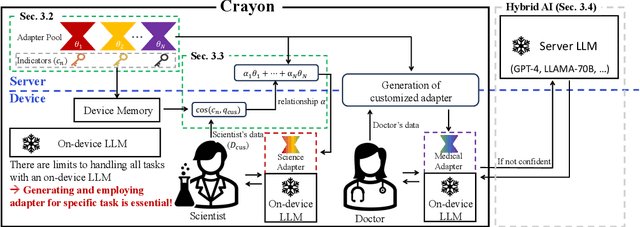
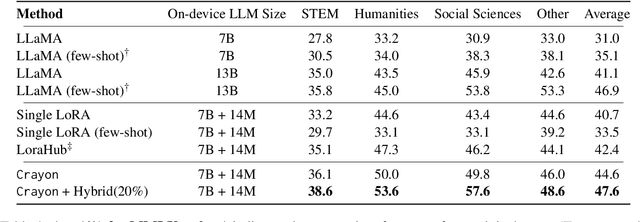
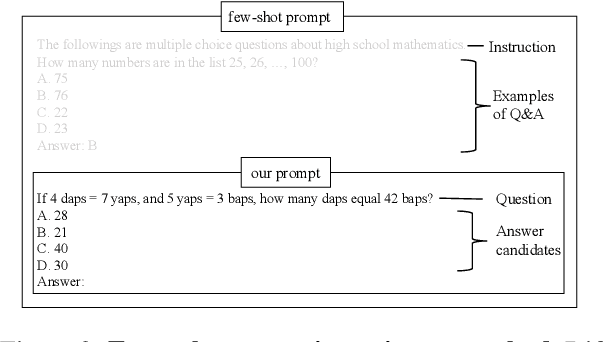

Abstract:The customization of large language models (LLMs) for user-specified tasks gets important. However, maintaining all the customized LLMs on cloud servers incurs substantial memory and computational overheads, and uploading user data can also lead to privacy concerns. On-device LLMs can offer a promising solution by mitigating these issues. Yet, the performance of on-device LLMs is inherently constrained by the limitations of small-scaled models. To overcome these restrictions, we first propose Crayon, a novel approach for on-device LLM customization. Crayon begins by constructing a pool of diverse base adapters, and then we instantly blend them into a customized adapter without extra training. In addition, we develop a device-server hybrid inference strategy, which deftly allocates more demanding queries or non-customized tasks to a larger, more capable LLM on a server. This ensures optimal performance without sacrificing the benefits of on-device customization. We carefully craft a novel benchmark from multiple question-answer datasets, and show the efficacy of our method in the LLM customization.
Domain Generalization with Relaxed Instance Frequency-wise Normalization for Multi-device Acoustic Scene Classification
Jun 24, 2022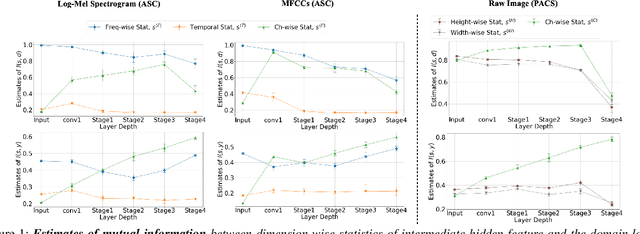
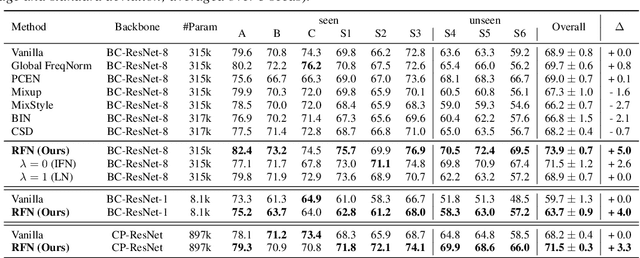
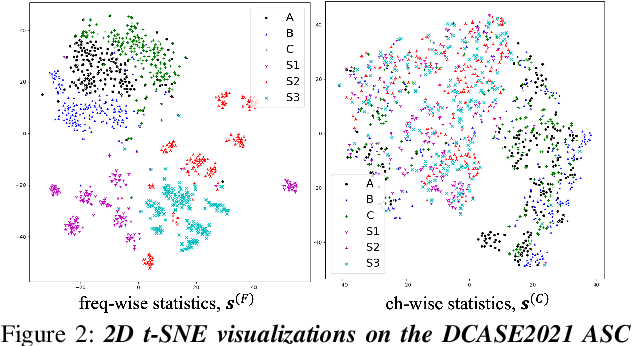
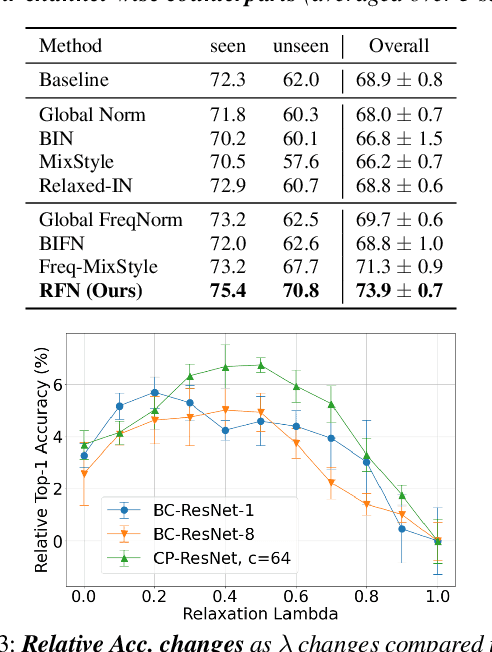
Abstract:While using two-dimensional convolutional neural networks (2D-CNNs) in image processing, it is possible to manipulate domain information using channel statistics, and instance normalization has been a promising way to get domain-invariant features. However, unlike image processing, we analyze that domain-relevant information in an audio feature is dominant in frequency statistics rather than channel statistics. Motivated by our analysis, we introduce Relaxed Instance Frequency-wise Normalization (RFN): a plug-and-play, explicit normalization module along the frequency axis which can eliminate instance-specific domain discrepancy in an audio feature while relaxing undesirable loss of useful discriminative information. Empirically, simply adding RFN to networks shows clear margins compared to previous domain generalization approaches on acoustic scene classification and yields improved robustness for multiple audio devices. Especially, the proposed RFN won the DCASE2021 challenge TASK1A, low-complexity acoustic scene classification with multiple devices, with a clear margin, and RFN is an extended work of our technical report.
 Add to Chrome
Add to Chrome Add to Firefox
Add to Firefox Add to Edge
Add to Edge